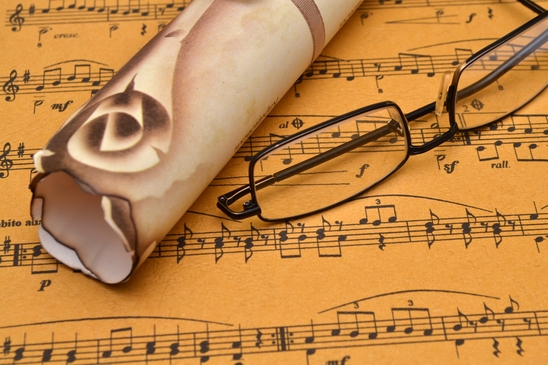Modern technology has brought us so much when it comes to music. We can search for any song we want on the Internet, we can carry huge quantities of music on a very small device, and we can listen to it on just about any technological device. While these advances are fairly obvious, have you ever considered the benefits we derive from technological advances in sheet music?
Sheet music is simply a techni cal term for the written form of music. Books, scores, individual pieces are all considered sheet music. Written forms of music have historically been difficult for composers and printers alike.
cal term for the written form of music. Books, scores, individual pieces are all considered sheet music. Written forms of music have historically been difficult for composers and printers alike.
Before the 15th century, all music was written by hand…all of it. Staves, notes, words, everything was created by hand and bound together in manuscripts for preservation. The majority of music preserved from this time is the motet and monophonic chant.
Even after the creation of the printing press, sheet music lagged behind the times. Music provides a unique challenge to any printer because of the complex and variety of the elements. It is crucial for notes and words to line up, and notes not properly placed in relation to the staff would create serious musical issues.
Since sheet music was so complex, much of the earliest music printed required the notes to be added by hand. The first machine created sheet music appeared in 1457, approximately 100 years after Gutenberg created his printing press. Unfortunately, this first music printing required three passes through the press to get the final product. It wasn’t until 50 years later that single impression sheet music was created.
Modern sheet music has followed the trends of the time…online. Much of the sheet music available today can be viewed or purchased online. Improvements in printing have allowed anyone to print music from their home computer. Technological advances throughout history have brought music from the elite to everyone.



Speak Your Mind